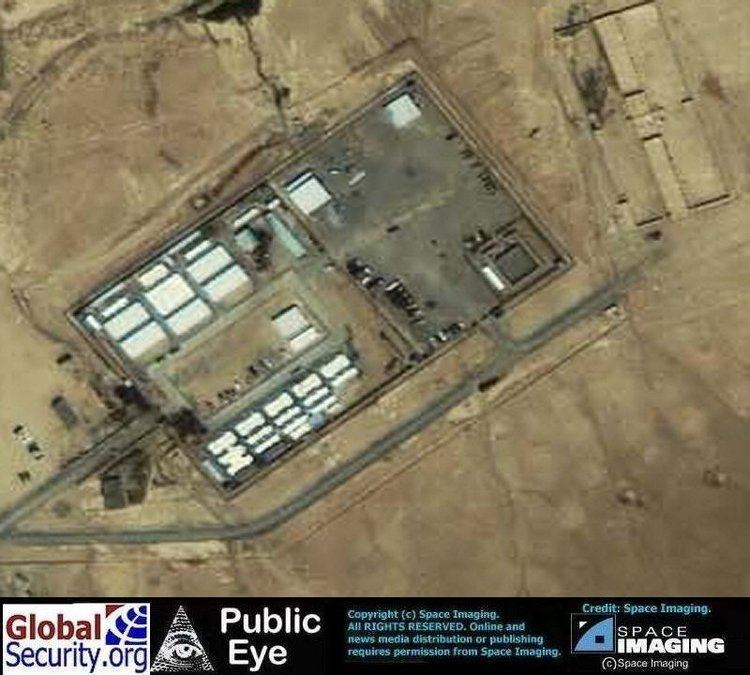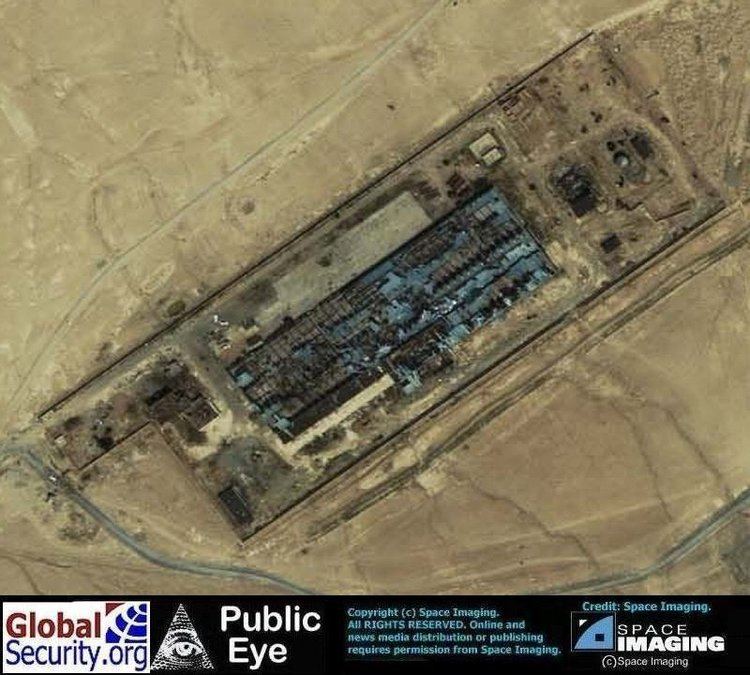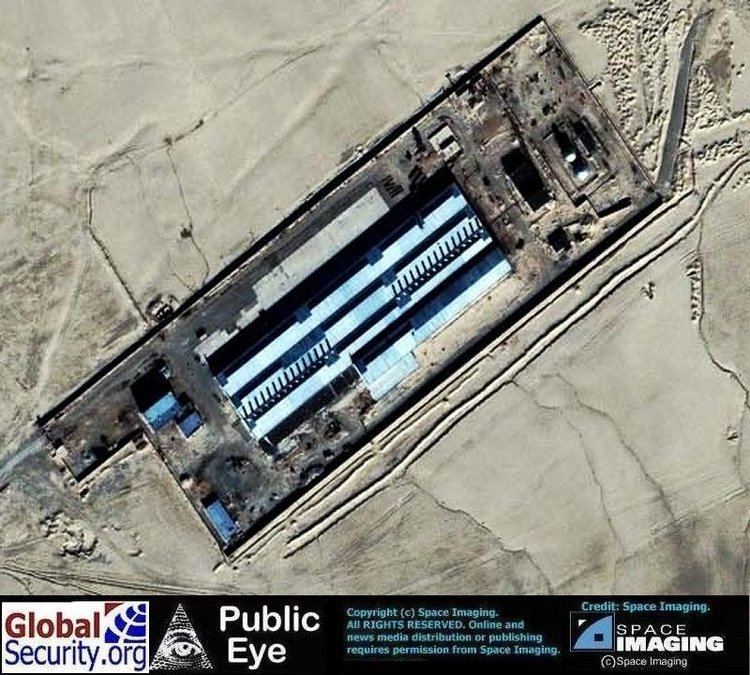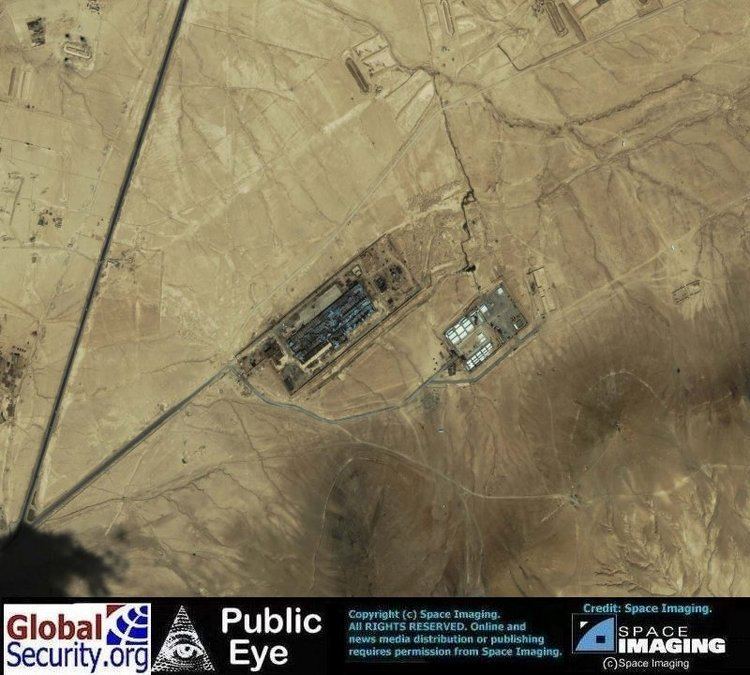 | ||
Paradise salt pit construction
The Salt Pit is the codename of an isolated clandestine CIA black site prison and interrogation center in Afghanistan. Another codename of the same site is Cobalt. It is located north of Kabul and was the location of a brick factory prior to the Afghanistan War. The CIA adapted it for extrajudicial detention.
Contents
- Paradise salt pit construction
- Blargh spelunky daily challenge 3 22 17 into the salt pit
- Description
- Death in custody
- Khalid El Masri
- Bureau of Prisons inspection
- References

In the winter of 2005, the Salt Pit became known to the general public because of two incidents. In 2011 the Miami Herald indicated that the Salt Pit and the dark prison were the same location.

Blargh spelunky daily challenge 3 22 17 into the salt pit
Description

Although the initial plan called for the Afghan government to operate the site, it actually was overseen by the CIA from the start. The CIA authorized more than $200,000 for the construction of the prison in June 2002; the site became operational with the incarceration of Ridha al-Najjar in September 2002, although the first formal guidelines for interrogation and confinement at the site were signed by Director of Central Intelligence George Tenet only in late January, 2003. Ultimately the prison housed, at one point or another, nearly half of the 119 detainees identified by the Senate Intelligence Committee report on CIA torture.

The prison was dark at all times, with curtains and painted exterior windows. Loud music was played constantly. The prisoners were kept in total darkness and isolation, with only a bucket for human waste and without sufficient heat in winter months. Nude prisoners were kept in a central area, and walked around as a form of humiliation. The detainees were hosed down while shackled naked, and placed in cold cells. They were subject to sleep deprivation, shackled to bars with their hands above their heads. Four of 20 cells of the prison had bars across the cell to allow this.
One senior interrogator said that his team found a detainee who had been chained in a standing position for 17 days, "as far as we could determine." A senior CIA debriefer told the CIA Inspector General that she heard stories of detainees hung for days on end with their toes barely touching the ground, choked, being deprived of food, and made the subject of a mock assassination. Multiple uses of sleep deprivation, prolonged standing, nudity and "rough treatment" were never reported. There are almost no detailed records of the detentions and interrogations during the earliest days of the site's existence.

Throughout interviews conducted in 2003 with the CIA Office of Inspector General, top CIA leadership and attorneys acknowledged they had little knowledge of the site operations. Both the Director of Central Intelligence George Tenet and CIA General Counsel Scott Muller have said they were "not very familiar" with the detention site. In August 2003, Muller said he believed that the site was merely a holding facility. The Inspector General review also found that there were no guidelines for "enhanced interrogation techniques" at the site and that some interrogators were "left to their own devices" with prisoners.
Death in custody
The recently assigned CIA case officer in charge of the prison directed the Afghan guards to strip Gul Rahman naked from the waist down, chain him to the floor of his unheated cell, and leave him overnight, according to the Associated Press. Rahman was captured in Islamabad on October 29, 2002. On the morning of 20 November 2002, he was found dead in his cell. A post-mortem examination determined that he had frozen to death. The Washington Post described the CIA camp commandant as "newly minted", on his first assignment. ABC News called the CIA camp commandant "a young, untrained junior officer". The Washington Post's sources noted that the CIA camp commandant had subsequently been promoted. The commandant was later identified as Matthew Zirbel. The Senate Intelligence Committee report on CIA torture revealed that no CIA employees were disciplined as a result of his death.
Rahman was buried in an unmarked grave, and his friends and family were never told of what happened to him. They learned of his fate in 2010 after an AP story revealed Rahman had died at Salt Pit.
Khalid El-Masri
Khalid El-Masri, a German citizen, was kidnapped from the Republic of Macedonia and rendered to Afghanistan. El-Masri's name was similar to that of Khalid al-Masri, a terror suspect; the Macedonian authorities thought he might be traveling on a forged passport, and notified the regional CIA station. A team of American CIA officials were dispatched to the Republic of Macedonia, where they kidnapped El-Masri after he was released by the Macedonian officers, but without regard to his legal rights under Macedonian law. It took over two months for the CIA official who ordered his arrest to assess whether El-Masri's passport was legitimate. El-Masri described being beaten and injected with drugs as part of his interrogation.
On May 18, 2006 U.S. Federal District Judge T.S. Ellis, III of the Eastern District of Virginia dismissed a lawsuit El-Masri filed against the CIA and three private companies allegedly involved with his transport, stating that a public trial would "present a grave risk of injury to national security." A Court of Appeals also dismissed the case.
On October 9, 2007 the U.S Supreme Court declined to hear El-Masri's appeal of the lower courts, without comment.
Bureau of Prisons inspection
On November 21, 2016, CBS News reported that an inspection of the Salt Pit, from officials from the United States Bureau of Prisons (BOP), had been confirmed through Freedom of Information Act lawsuits. The Bureau of Prison inspection first became public knowledge when the United States Senate Intelligence Committee published its 600-page unclassified summary of its 6,000 page classified report on the CIA's use of torture. The Bureau of Prison denied sending inspectors. The American Civil Liberties Union then filed FOIA requests for information about the inspections. When the Bureau of Prisons declined to honor the requests, the ACLU took the matter to court.
According to CBS News "The admission came Thursday in response to a lawsuit filed by the ACLU, which sued in April after the Bureau of Prisons denied having any record of involvement with the detention site." In the November filing, the Bureau of Prisons acknowledged that two officials had visited the prison in 2002, but said that they had not technically lied when they denied having any record of the visit, because the CIA had instructed the BOP not to keep any record of the visit to be maintained.
The CBS News report quoted extensively from the Senate report's coverage of the visit. Their report stated that although Gul Rahman died during the BOP inspection, the CIA's records stated that the BOP inspectors "determined the site was 'not inhumane'".
Captives cowered when their cell doors were opened for the BOP inspectors.
CBS News first covered suggestion the BOP inspected the prison in June 2015. One of the documents the BOP published in response to the FOIA request was an email where an official whose name was redacted forwarded a link to the CBS article, together with the comment, "They just won't let it go."
